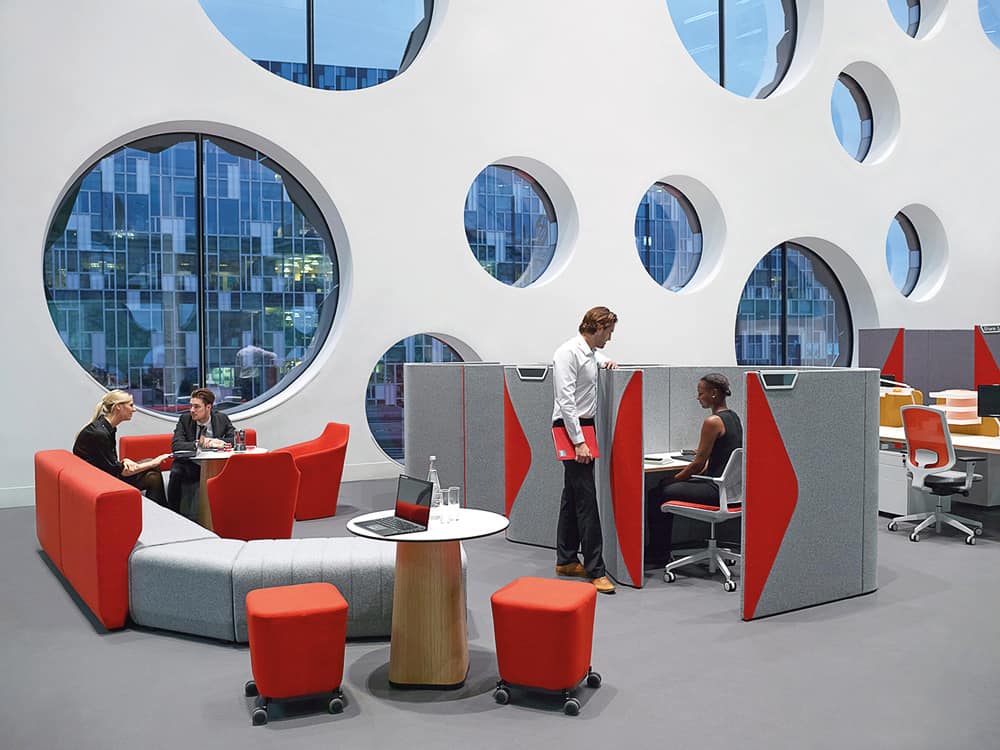By Cathy Habas, freelance writer and content marketer at SEO Service Crew
Whether you are moving your business’s office out of your garage and into more traditional workspace, or you need to reevaluate your current space, you have some key decisions to make.
Thinking beyond simple checklists for important items like paperclips and mouse pads, here are some office space essentials that can affect your employees’ moods and comfort, as well as provide a good first impression to potential clients or partners.
A reception area
Is there a chance your business will welcome visitors or guests for any reason? Or are you ready to take your business to the next level? Then first impressions are extremely important. Have a reception area for your main office.
The reception area can also be the home base for your accountant if your business is small. The receptionist has a very important job: as the first person guests see when they walk through the door, he or she sets the tone for the entire business.
Receptionists can handle appointment schedules for busy executives, can greet guests and visitors, can collect and distribute mail, and more.
The reception area is also an important buffer between employees and visitors, so that if anyone walks in, they have to get past the receptionist first. And while a feisty receptionist shouldn’t be your only security plan, the ‘funnel’ that a lobby or reception area creates certainly helps direct traffic and make sure no one unauthorised sneaks past.
Good lighting
Hopefully your business office isn’t located in a dark, windowless room in the basement. But even having plenty of windows doesn’t guarantee that the lighting is adequate. Your employees shouldn’t have to squint or strain their eyes to see what they are doing. Ensure that each area is well lit.
A bright workplace is also more inviting and cheerful, so err on the side of caution and install more lights than you might actually need. Lights that can easily be customised (i.e., you can turn off a small section of lights instead of plunging the entire office into darkness with the flip of a single switch) are ideal, as are lights that can be dimmed.
Your employees will also love you if you skip the traditional fluorescent lights, which are known to trigger migraines or symptoms of light sensitivity. Quickly replacing flickering or buzzing lights will also reduce unnecessary workplace stress. After all, anyone with a headache can’t be at the top of their game, so it’s a win-win for employers and employees alike.
A bright workplace is also more inviting and cheerful, so err on the side of caution and install more lights than you might actually need
Kitchen/Break room
When your employees are on break, they should get a chance to really feel like they are stepping away from their work for a bit. No one likes to have to eat at his or her desk. Have a separate kitchen/break room where everyone can chat and relax before heading back to the daily grind.
Stay on everyone’s good side by ensuring the kitchen or break room stays well stocked with snacks, napkins, and utensils. A microwave oven, coffee maker, electric kettle, refrigerator and freezer are essential appliances to have as well.
All offices need to have clear kitchen rules or guidelines regarding who is responsible for cleaning up the area. In most small offices, there is no separate janitorial staff. It’s everyone’s responsibility to keep the place looking civilised. Keep trash bags and other cleaning supplies within easy reach.
Ample storage
You may have opted for the sleek, modern design of an open workspace, where boxy cubicles are banished and there isn’t a single file cabinet in sight.
This is certainly appealing, but at the same time, your employees need to be able to stay organized however they see fit. Offering ample storage options is one way to see to this necessity. Drawers and lockers are just one possibility. Hooks and shelves and cork boards may also be useful.
Decide how you are going to optimise your space while also allowing for your employee’s personal organisational preferences.
Intuitive communications systems
Your internal phone system shouldn’t require a day’s training or a cheat sheet that’s bigger than the phone itself. Make sure your phone system is ridiculously intuitive to use so that client calls are never accidentally dropped when trying to make a transfer, for example.
If there is a communal printer, it should also be intuitive. Everyone should know where the extra printer paper is located and how to fix basic problems like paper jams, or even how to replace the ink. The same is true for the fax machine and photocopier.
Decide how you are going to optimise your space while also allowing for your employee’s personal organisational preferences
Comfortable furniture
There’s no better way to say, “I don’t care about you as much as I care about my bottom line” than by supplying your employees with rock-hard desk chairs. Everyone should be comfortable enough to carry on with their work instead of having to fidget and stretch or get up and walk around every five minutes.
Adjustable chairs are the best. Ensure that the seat is comfy, at least, and that there are plenty of options for height of the chair, height of the arm rests, angle of tilt, lower back support and even neck support if necessary. Ergonomic desks and keyboards will also keep folks comfortable throughout the day.
What other tips do you have for maintaining a comfortable and productive work environment? Share your experience in the comments below.
Cathy Habas is a freelance writer at Writersquad who focuses on the marketing and business development niches.
She works with clients around the globe and has helped nurture several start-ups into flourishing businesses.
Cathy is currently working as one of the top content marketers for SEO Service Crew.

